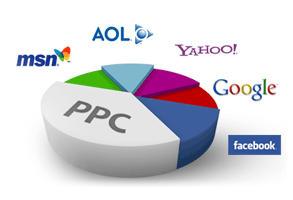Four Tips to Whip Your PPC into Shape:
 Google Adwords has been in our lives for more than 10 years; I’m sure some of you have pay-per-click accounts that have grown and grown and grown… you get it. You have an Adwords account full of paused campaigns, ineffective keywords, expired offers and links to pages that haven’t existed in years. Still, more and more business owners are buying into the idea that paid search marketing is a surefire way to drive traffic to a website and to increase Return on Investment (ROI). Their confidence shows in their spending. According to eMarketer.com, next year’s spending predictions include a $7 billion increase in online ad spending.
Google Adwords has been in our lives for more than 10 years; I’m sure some of you have pay-per-click accounts that have grown and grown and grown… you get it. You have an Adwords account full of paused campaigns, ineffective keywords, expired offers and links to pages that haven’t existed in years. Still, more and more business owners are buying into the idea that paid search marketing is a surefire way to drive traffic to a website and to increase Return on Investment (ROI). Their confidence shows in their spending. According to eMarketer.com, next year’s spending predictions include a $7 billion increase in online ad spending.
What is an advertiser to do in this increasingly competitive space?
Do you have old test ads still running?
Testing is vital to keeping your Adwords Account and PPC campaigns running at optimal levels. Are you clearing out the under-performing test ads? Setting up a test is easy enough and as you monitor your conversions and which ads are working vs. non-performing ads you should be going through your account and deleting those loser ads.
This is important; just because you have a winning ad does not mean Google will stop serving up the loser ad a small percent of the time. By calling out the winning ad, then deleting the loser ad, your campaign will continue to run at an optimal level until it is time to test again.
Are all of your offers up-to-date?
If you are offering money off or cash back in a search ad, you will need to make sure those ads come down in a timely manner. The last thing you want is to have a potential customer click on an expired “50% off” search ad only to come to a landing page offering only 20%.
This is important for multiple reasons. First, you lose a lot of trust when a potential buyer’s expectations are not met. If you are not meeting customer expectations and building trust, what are the chances they will click on your next search ad (not to mention display)? All of this broken trust will end up causing your conversion rates to drop, since site visitors are not finding what they want or expect. By planning out when your offers will come down (with an exact date) you will be able to stay on top of your pricing and visitor expectations.
What do you mean: “That page does not exist”?
Websites have to be refreshed from time to time. You create new pages, make conversion funnels easier to flow thru and even take away services or products you no longer offer. When it comes to major changes to your site, you have 301 redirects to help save you and send traffic to the new parts of your site. But some of those pesky links are easy to miss and instead of sending visitors to a great page full of converting content, they get an error.
This is important to keep an eye on. If, after a redesign or major site change you notice your 404 error pages beginning to creep up, you will want to create redirects to send the broken links back to your homepage or the new appropriate page. When setting up new pages on your site and taking down old pages it is essential to go back into AdWords and check how many keywords are going to dead pages and decide if you want them redirected to your homepage, updated for a new landing page or killed all together. Another easy way to keep visitors from feeling left out when getting an error page is to create a custom branded 404 error page to help soften the blow of a broken link.
I keep seeing the same keywords over and over and over…
When your large Adwords account grows with ad groups and campaigns, you will notice there are times where the same keywords will appear again and again. The big problem you run into here is stat pollution, where you have duplicate queries going to different pages and searchers are seeing ads you didn’t intend and some queries just don’t show up at all anymore.
Duplicate keywords “muddy the waters” of your highly optimized PPC campaign and keep you from realizing the full ROI of your program. By looking at your query data and adding the ad groups into a pivot table, you will be able to see which keywords are duplicated most often and in how many ad groups.
Keeping your PPC in fighting shape will help keep your conversions and click-throughs humming along. All it takes is a little attention to the setup of your accounts, monitoring your keywords and ultimately having best practices in place for adding and removing ads, keywords and groups. If that is too much you can always take that monster account into “dry dock” and overhaul the whole thing.